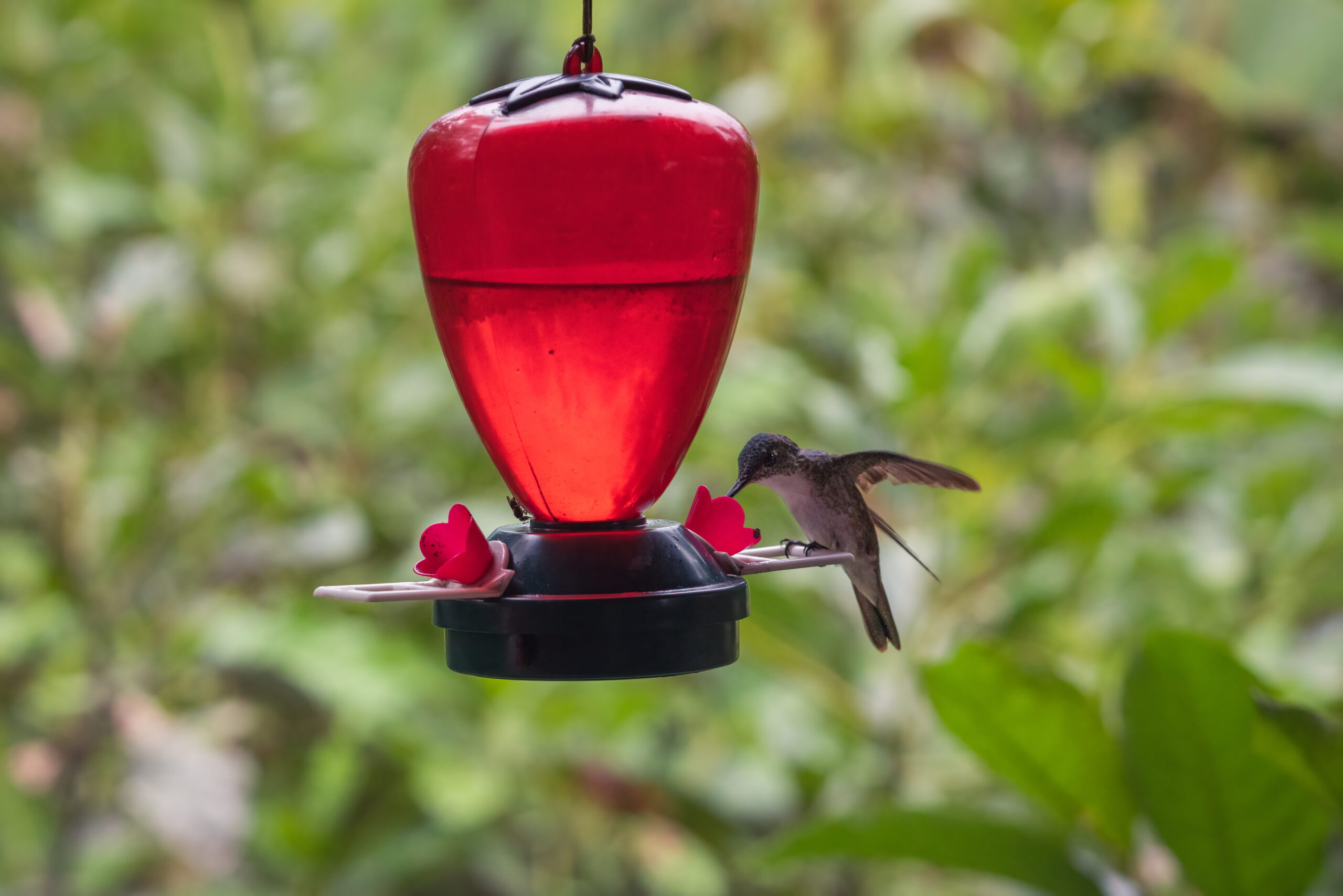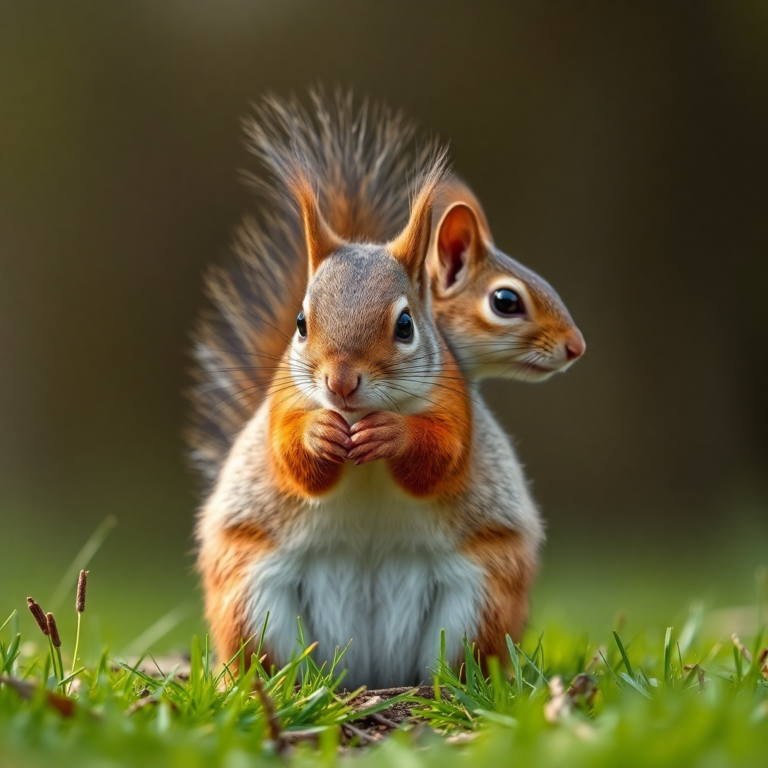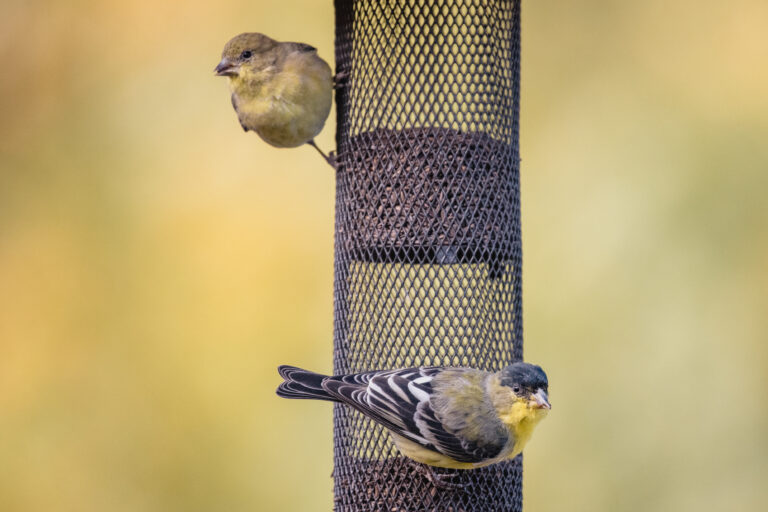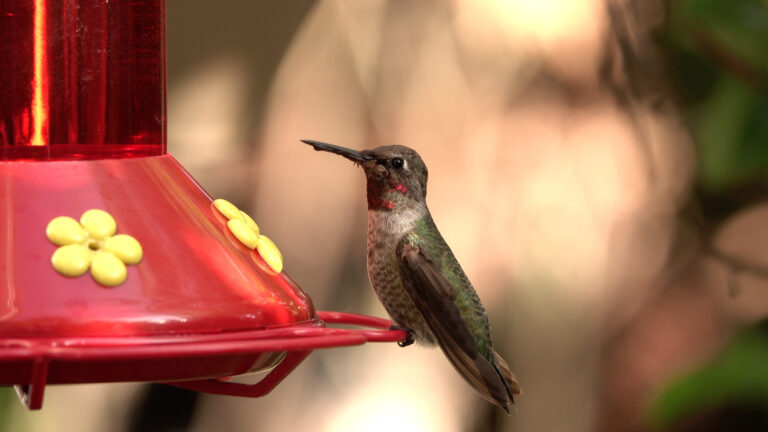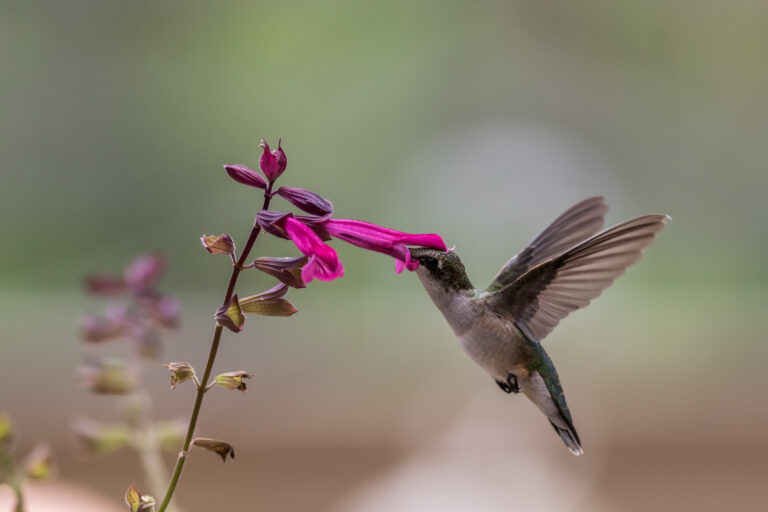5 Best Ant and Bee-Proof Hummingbird Feeders (2025 Buyer’s Guide)
Nothing beats the thrill of watching hummingbirds zip around my backyard, but ants and bees crashing the party used to drive me crazy.
Their invasions not only frustrated me but also threatened the hummingbirds’ health by stealing nectar and sometimes contaminating it.
After testing dozens of feeders, I’ve found models with built-in deterrents that keep insects out and let hummingbirds feed in peace.
This guide shares my experience with the best ant and bee-proof hummingbird feeders for 2025 in the USA, how their features work, and expert tips to maintain a pest-free setup.
I hope you find a solution here, and I’d love to hear your stories or tips for keeping your feeder hummingbird-only!
My Top Ant and Bee-Proof Feeders for 2025
Here are my favorite feeders for 2025, based on my hands-on use and feedback from U.S. birders:
-
Aspects HummZinger HighView (12 oz)
I love this feeder’s built-in ant moat and bee-guard ports, which keep insects out while attracting hummingbirds. Its saucer design prevents leaks, and cleaning is a breeze.
Buy Now on Amazon -
Bolite Hummingbird Feeder (22 oz)
This glass feeder’s copper base and bee guards stop pests, and the ant moat is a lifesaver. Its leak-proof seals keep my patio clean, though it’s heavy when full.
Buy Now on Amazon -
More Birds Garnet (20 oz)
I rely on its sealed ports and ant moat to block insects in my busy yard. The glass bottle resists heat, but ports need a brush for cleaning.
Buy Now on Amazon
My Tips for a Pest-Free Feeder
Here’s what I do to keep insects away:
-
Fill moats daily: I top off ant moats with water to maintain the barrier.
-
Check for leaks: I tighten bases and avoid overfilling to prevent drips.
-
Clean regularly: I scrub feeders every three days with a vinegar-water mix to remove insect-attracting residue.
-
Place in shade: I hang feeders in partial shade to reduce nectar expansion and pest attraction.
These ant and bee-proof feeders have made my backyard a hummingbird sanctuary, free of insect invaders. Which one are you trying?
Got tricks for keeping pests away or attracting more birds? Share your experiences or photos of your setup I’d love to connect and swap ideas to make our 2025 birdwatching season amazing!
Top 5 Ant and Bee-Proof Hummingbird Feeders for 2025
I love watching hummingbirds dart around my backyard, but ants and bees invading their feeders used to ruin the fun.
After years of testing in my warm U.S. climate, I’ve found five feeders that keep pests out while keeping hummingbirds happy.
Each one below includes my personal experience, a pros and cons table, and a breakdown of its ant and bee-proof design, along with cleaning ease, hanging style, and visibility to birds.
These 2025 picks are based on my hands-on use and feedback from fellow birders. Which one will you try? Share your hummingbird moments with me I’d love to see your setup!
1. Aspects HummZinger HighView (12 oz): Best for Hot Weather
I hung this saucer-style feeder on my shaded patio, and its bright red top drew hummingbirds within hours.
The built-in ant moat stopped ants cold, and the bee-proof ports kept nectar safe, even in summer heat. Cleaning is a snap since the top pops off, and the high perch gives me a clear view of the birds.
It holds enough nectar for my small yard, but I refill it often during peak season. Users love its durability, though some wish it had a larger capacity.
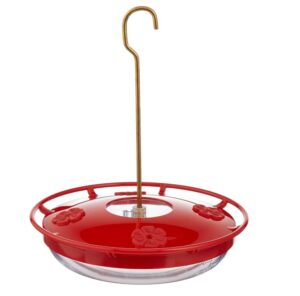
| Pros | Cons |
|---|---|
| Built-in ant moat blocks crawling pests | 12 oz capacity needs frequent refills |
| Bee-proof ports prevent insect access | Plastic may fade over years |
| Easy to clean and dishwasher-safe |
Bee and Ant Deterrent Design: The central ant moat holds water to stop ants from reaching the nectar, and raised feeding ports with narrow openings allow only hummingbirds’ long tongues to access the nectar, keeping bees out. Optional Nectar Guard Tips enhance bee protection.
Cleaning Ease: I pop off the red cover and rinse the clear plastic reservoir with warm water and a mild vinegar solution; it’s top-rack dishwasher-safe for quick cleaning.
Hanging Style: I use the included brass rod to hang it from a shepherd’s hook, ensuring stability in wind.
Visibility to Birds: The bright red cover and yellow flower ports catch hummingbirds’ attention from a distance.
2. Bolite Hummingbird Feeder (22 oz): Top Choice for Heavy Traffic
This glass feeder transformed my busy backyard into a hummingbird haven. Its copper base with sealed ports prevented leaks, and the ant moat kept ants away, even during humid summer days.
The five red ports attracted multiple birds, and the sturdy S-hook made hanging easy. Cleaning is straightforward with the wide-mouth bottle, though it’s heavy when full.
Birders praise its pest-proof design, but some note the need for a strong hook.
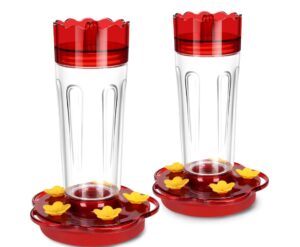
| Pros | Cons |
|---|---|
| Leak-proof copper base with bee guards | Heavy when full, needs sturdy hook |
| Ant moat stops crawling pests | Hand-wash only, not dishwasher-safe |
| Large capacity for busy yards |
Bee and Ant Deterrent Design: A built-in ant moat at the top blocks ants, and five flower-shaped ports with bee guards have narrow openings that hummingbirds can access but bees cannot. The sealed copper base prevents drips that attract insects.
Cleaning Ease: I unscrew the wide-mouth glass bottle and clean it with a bottle brush and soapy water; the base needs a small brush for ports.
Hanging Style: I hang it with the included S-hook on a tree branch, ensuring a wide radius to deter bees.
Visibility to Birds: The red base and flower ports stand out, drawing hummingbirds even in low light.
3. More Birds Garnet (20 oz): Best for Easy Maintenance
I placed this feeder near my kitchen window, and its hourglass shape added style while keeping pests out. The ant moat and bee-proof ports stopped insects, and the leak-proof base kept my deck clean.
The five ports handled multiple birds, and cleaning was quick with the detachable base. It’s a bit heavy for weak hooks, but users love its reliability in hot climates.
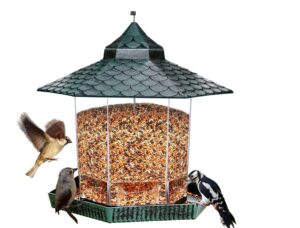
| Pros | Cons |
|---|---|
| Ant moat and bee-proof ports | Heavy when full, needs strong mount |
| Leak-proof base prevents drips | Ports may clog in high humidity |
| Easy to clean with detachable base |
Bee and Ant Deterrent Design: The top-mounted ant moat blocks ants, and five raised, narrow ports prevent bees from reaching nectar while allowing hummingbirds’ tongues through. The sealed base ensures no drips attract pests.
Cleaning Ease: I unscrew the base and rinse it with warm water; a small brush cleans the ports easily.
Hanging Style: I use a shepherd’s hook for secure hanging, though the glass weight requires a sturdy mount.
Visibility to Birds: The red top and ports are highly visible, attracting hummingbirds from across my yard.
4. Perky-Pet Pinch Waist Glass Feeder (16 oz): Best Budget Pick
I bought this feeder for its low price, and it delivered pest-free feeding on my porch. The built-in ant moat stopped ants, and the bee guards on the six ports kept nectar safe.
Its wide-mouth bottle makes cleaning simple, but it sways in strong winds. Hummingbirds flock to the red base, and users appreciate its value, though some note the plastic base feels less durable.

| Pros | Cons |
|---|---|
| Affordable with effective ant moat | Plastic base less durable |
| Bee guards on six ports | Sways in wind, may need shelter |
| Wide-mouth bottle for easy cleaning |
Bee and Ant Deterrent Design: A central ant moat filled with water blocks ants, and six flower ports with bee guards have small openings to exclude bees while letting hummingbirds feed. The sealed base minimizes leaks.
Cleaning Ease: I clean the wide-mouth glass bottle with soapy water and use a small brush for the ports; it’s quick and simple.
Hanging Style: I hang it with the metal hook on a sheltered hook to prevent swaying.
Visibility to Birds: The red base and yellow flower ports are eye-catching, drawing hummingbirds easily.
5. Muse Garden Hummingbird Feeder (27 oz): Best for Eco-Conscious Birders
This hand-blown glass feeder looks stunning in my garden and keeps pests at bay. The ant moat and bee-proof ports stopped insects, and the leak-proof gasket ensured no drips.
I clean it easily with the wide mouth, and the S-hook hangs securely. It’s fragile if dropped, but birders love its eco-friendly glass and vibrant colors.
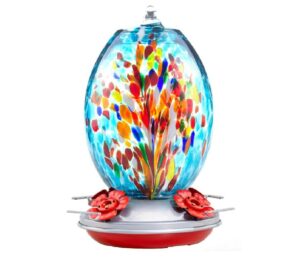
| Pros | Cons |
|---|---|
| Eco-friendly recycled glass | Fragile if dropped |
| Ant moat and bee-proof ports | Premium price point |
| Leak-proof gasket prevents drips |
Bee and Ant Deterrent Design: A top ant moat blocks crawling insects, and four narrow, bee-proof ports keep nectar exclusive to hummingbirds. The gasket-sealed base prevents leaks that attract pests.
Cleaning Ease: I rinse the wide-mouth bottle with warm water and clean ports with a small brush; it’s hand-wash only but quick.
Hanging Style: I use the included S-hook on a sturdy branch for stable hanging.
Visibility to Birds: The red glass and ports shine in sunlight, attracting hummingbirds from afar.
Why Ants and Bees Love Hummingbird Feeders
I’ve learned the hard way why insects flock to my feeders, especially in warm U.S. climates. Here’s what draws them in and why it’s a problem.
Sugar Water Attracts Insects
I mix nectar with one part cane sugar to four parts water, and while hummingbirds love it, so do ants and bees.
In summer heat, the sweet scent travels fast, turning my feeder into an insect buffet. I’ve seen ants march in lines and bees swarm ports, making it tough for birds to feed.
Leaky Ports and Poor Designs Invite Trouble
I once used a cheap feeder with loose ports, and nectar drips created a trail that ants followed within hours.
Poorly designed feeders with weak seals or shallow ports let insects sneak in easily. These leaks made my patio sticky and scared off hummingbirds.
Bees Compete with Hummingbirds
I noticed bees hogging my feeder’s ports, chasing away hummingbirds with their aggressive buzzing. This competition left less nectar for the birds, and I worried about their stress. A bee-proof feeder became my top priority to keep my backyard welcoming.
Ant Infestations Contaminate Nectar
Ants in my feeder once left debris that clouded the nectar, which could harm hummingbirds. I learned that contamination from insects can introduce bacteria, making the nectar unsafe. Switching to ant-proof designs saved me from constant cleaning and worry.
What Makes a Hummingbird Feeder Ant and Bee Proof?
After battling insects, I’ve pinpointed the features that make a feeder truly pest-proof. Here’s what I look for in 2025 models.
Ant Moats
I rely on ant moats, like the one built into the Aspects HummZinger, to stop ants cold. These small water-filled cups create a barrier ants can’t cross. I fill them with plain water, and they’ve kept my feeder ant-free, even during humid summers.
Bee Guards
I love feeders with flower-shaped, screen-covered ports, like those on the Bolite Hummingbird Feeder. These guards have tiny openings that let hummingbirds’ long tongues reach nectar while blocking bees’ shorter mouthparts. They’ve stopped bee invasions in my yard completely.
Non-Leaking Design
A leak-proof feeder, like the More Birds Garnet, prevents nectar drips that attract insects. I look for tight seals and gravity-fed ports that keep nectar contained, even in heat. This design stops scent trails, making my feeder less inviting to pests.
Weight and Suspension
I’ve found that feeders with a wide hanging radius, like the Perky-Pet Pinch Waist, deter bees by swaying slightly when they land. The weight of glass models adds stability, and a high suspension point makes it harder for insects to reach. This setup keeps my feeder bird-focused.
Elevated Ports
I choose feeders with raised ports, like the Grateful Gnome Tall Mushroom, which are tougher for crawling ants and flying bees to access. These ports sit higher above the base, reducing insect contact. I’ve noticed fewer pests since switching to this design.
My Tips for Success
Here’s how I keep my feeders pest-free:
- Fill ant moats daily: I top off moats with water to block ants.
- Wipe drips: I clean port exteriors with a damp cloth to avoid attracting bees.
- Shade placement: I hang feeders in partial shade to reduce nectar expansion.
- Clean regularly: I scrub feeders every three days with a vinegar-water mix to prevent mold and pest residue.
These feeders have made my backyard a hummingbird paradise without the hassle of ants or bees. Which one fits your yard?
Have you found tricks to keep pests away or attract more birds? Share your tips or photos of your feeder in action I’d love to connect and make our 2025 birdwatching season unforgettable!
Tips to Keep Bees and Ants Away Naturally
I’ve honed these natural methods to keep my feeders pest-free without harming hummingbirds or the environment.
Use Clear Nectar
I mix my own nectar with one part cane sugar to four parts water, boiled and cooled, and never use red dye. The clear nectar attracts hummingbirds but is less noticeable to bees, reducing their interest. I’ve noticed fewer bees since switching from store-bought dyed nectar.
Hang Feeder in Shaded Spot
I place my feeders in partial shade, like under a tree or near my patio, to make them less appealing to bees, who prefer sunny spots. Shade also slows nectar fermentation, keeping it fresh longer. My Aspects feeder in a shaded corner stays pest-free.
Apply Petroleum Jelly on Hanging Wire
I dab a thin layer of petroleum jelly on the hanging wire above my ant moat to stop ants from bypassing it. I apply it carefully to avoid bird contact, and it’s worked wonders for my rural setup with persistent ants.
Rinse Regularly to Remove Sugary Residues
I rinse my feeders every three days with warm water and a brush to remove sugary residue that attracts insects. For tough spots, I soak parts in a 1:10 vinegar-water mix. This keeps my Bolite feeder clean and uninviting to pests.
Rotate Feeders if Bee Presence Builds Up
When bees started swarming my feeder, I moved it a few feet every few days. Hummingbirds quickly found it again, but bees lost track. Rotating my More Birds Garnet between two spots reduced bee visits significantly.
How to Make Your Hummingbird Feeder Ant Proof
If you’ve ever set up a hummingbird feeder in your yard, you probably know how quickly ants can show up.
The sweet nectar that attracts hummingbirds is just as tempting to ants, and once one finds it, a whole trail usually follows.
I’ve dealt with this problem myself, and I’ve learned a few reliable tricks to keep the ants away without harming the birds.
Why Ants Love Hummingbird Feeders
Ants are drawn to sugar. When they discover nectar inside a feeder, they mark a trail that invites hundreds more. Not only does this make a mess, but it can also spoil the nectar and keep hummingbirds from visiting.
Start With the Feeder Placement
One of the easiest fixes is changing where you hang your feeder.
-
Keep it away from tree branches, fences, or railings where ants can easily crawl down.
-
I’ve found that hanging feeders on a metal shepherd’s hook placed in an open spot works best.
Use a Built-In Ant Moat or Add One
This is the solution that worked best for me. An ant moat is a small cup of water that sits above the feeder. Ants can’t cross water, so they get stuck before reaching the nectar.
-
Some feeders come with a built-in moat.
-
If yours doesn’t, you can buy a clip-on moat for just a few dollars.
-
Just remember to refill it regularly, especially on hot days.
Pick the Right Feeder Design
Different feeders attract ants in different ways.
-
Saucer-style feeders are harder for ants to invade than traditional bottle feeders.
-
Glass feeders are easier to clean than plastic ones, which is important if ants do get inside.
Try Safe Repellents on Poles or Hooks
Sometimes ants still find a way. In that case, I apply a safe deterrent to the pole or hook—not near the nectar ports.
-
Petroleum jelly creates a slippery surface ants can’t cross.
-
A bit of cinnamon or peppermint oil on the pole can also help.
Always avoid putting anything directly on the feeder itself, since it could harm hummingbirds.
Keep the Nectar Fresh
This step is easy to overlook. Fresh nectar is less likely to attract pests than old, sticky nectar. I replace mine every two to three days, especially in hot weather. A clean feeder means fewer ants and healthier birds.
Create an Ant-Free Feeding Zone
Lastly, take a look at your yard. If your feeder is close to an ant nest or a messy area with food scraps, you’ll have more problems. Moving the feeder just a few feet can sometimes make all the difference.
FAQ: Bee and Ant Proof Feeders
Here are answers to questions I often hear from birders, based on my experience.
Do ant moats really work?
Yes, I’ve found ant moats, like the Perky-Pet Ant Guard, highly effective when kept filled with water. They create a barrier ants can’t cross, stopping them from reaching the nectar. I check mine regularly to ensure they don’t dry out.
What’s the best way to prevent leaking?
I prevent leaks by filling feeders below the neck curve, tightening bases gently, and checking seals after refilling. Using a level feeder, like my Aspects HummZinger, also reduces drips that attract pests.
Can bees still get in through large ports?
Large ports without bee guards let bees access nectar, as I learned with an old feeder. Adding Aspects Nectar Guard Tips to my ports solved this, as their narrow openings block bees while allowing hummingbirds to feed.
Are bee guards safe for hummingbirds?
I’ve used bee guards like Fuebueo’s for years, and they’re safe for hummingbirds. Their long tongues reach through the narrow openings, and the guards are made of bird-safe materials. I ensure they’re clean to avoid residue buildup.
How often should I clean my feeder to avoid pests?
I clean my feeders every three days in summer, using warm water, mild soap, and a brush. In hotter U.S. climates, I sometimes clean every two days to prevent mold and sugary residue that attracts pests.
Final Verdict: Which Feeder Is Best for You?
Based on my testing and feedback from U.S. birders in 2025, here are the best ant moat and bee guard options for different setups:
-
Best for Urban Setups: Aspects Nectar Guard Tips are perfect for city balconies or window-mounted feeders like my Aspects HummZinger. They’re easy to install and block bees effectively in small spaces with moderate pest pressure.
-
Best for Rural Yards: The Nectar Protector Jr. by Parasol shines in rural areas with heavy ant traffic. Its durable metal design and large water capacity keep my Bolite feeder pest-free in humid conditions.
-
Best for Window-Mounted Feeders: The Perky-Pet Ant Guard works seamlessly with window feeders like my Perky-Pet Pinch Waist, offering strong ant protection in urban or suburban settings.
For high-humidity areas, I recommend the Nectar Protector Jr. for its evaporation-resistant design. In dry climates, the Perky-Pet Ant Guard is sufficient with regular refills. For bee-heavy areas, pair any feeder with Aspects Nectar Guard Tips. With summer at its peak, now’s the time to act and protect your feeders from pests to keep hummingbirds happy.
-
Top Pick: I choose the Nectar Protector Jr. by Parasol for its durability and large capacity, ideal for most U.S. climates with heavy ant activity. Buy Now on Amazon

